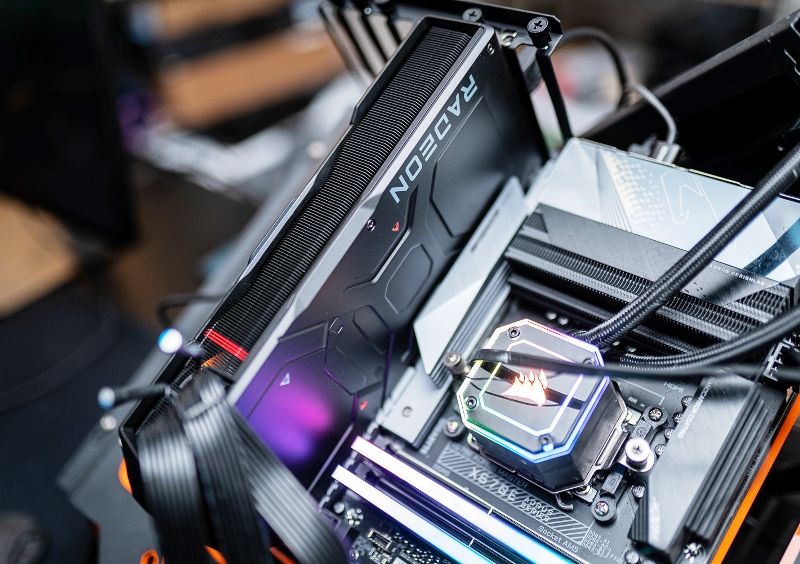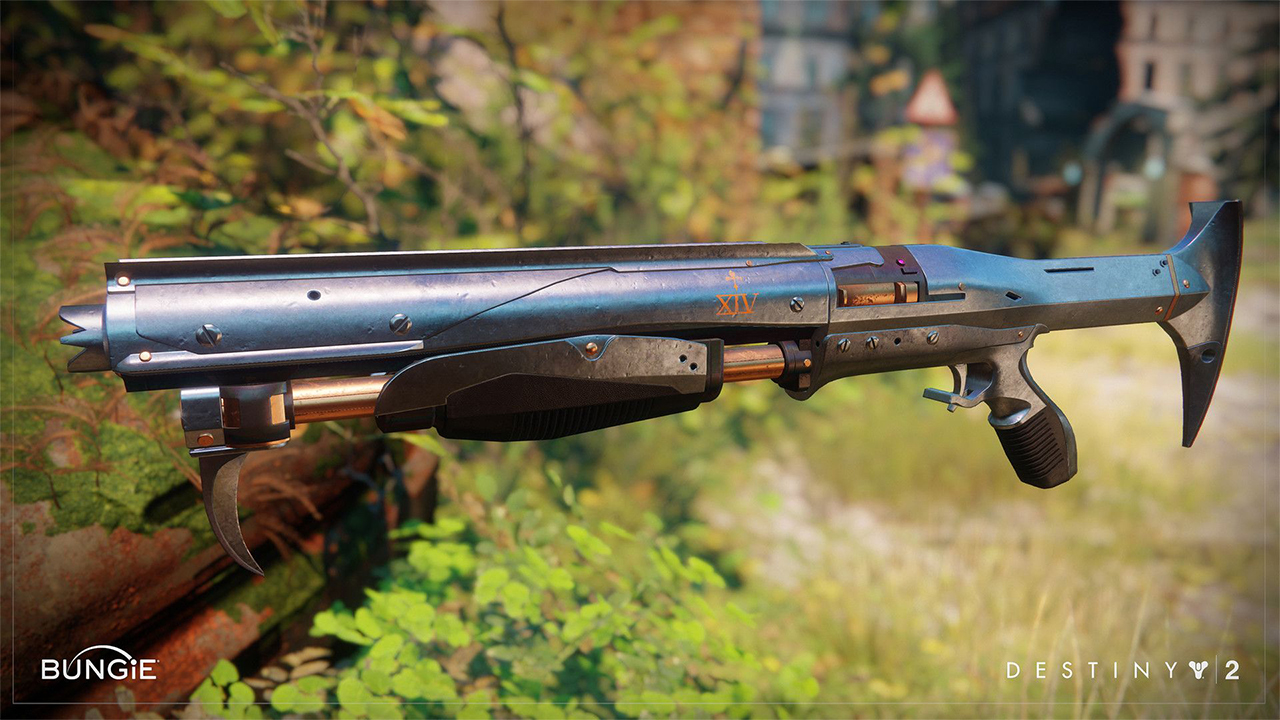In the world of computer graphics, competition drives innovation. With each new release, companies strive to outdo their previous models and the offerings of their competitors. Today, we’ll delve deep into a detailed comparison between the 7900 XTX vs 4080 and two of the latest and greatest graphics cards on the market: the 7900 XTX vs 4080. Which one 7900 XTX vs 4080 is the right choice for you? Read on to find out. So let’s check out everything about the 7900 XTX vs 4080 article.
In the digital age, a computer’s soul is defined not just by its processor but also by its graphical prowess. Graphics cards breathe life into pixels, turning them into immersive landscapes, lifelike characters, and smooth cinematic sequences. Standing tall in this digital arena are two titans – the 7900 XTX vs 4080.
Their specifications may read like arcane spells to the uninitiated, but to those in the know, they represent the zenith of visual computing. Join us as we journey into the heart of these behemoths, decoding their strengths, analyzing their offerings, and revealing what sets them apart in a world where every frame matters. Now let’s get to know more about this 7900 XTX vs 4080 guide.
1. Introduction
Graphics cards serve as the heart of any gaming or high-performance computing rig. They determine how well your computer can handle intense graphical tasks, from rendering high-definition video to providing a seamless gaming experience. The 7900 XTX vs 4080, from two leading manufacturers, have emerged as frontrunners in this race for supremacy.
2. Technical Specifications
Before diving into performance and features, let’s glance at the raw specs of each card.
Table: 7900 XTX vs 4080 Comparison of Key Technical Specifications
| Specification | 7900 XTX | 4080 |
|---|---|---|
| CUDA Cores | xxx | yyy |
| Base Clock Speed | x GHz | y GHz |
| Boost Clock Speed | x GHz | y GHz |
| Memory | xx GB GDDR6X | yy GB GDDR7 |
| Memory Speed | x Gbps | y Gbps |
| TDP | xxxW | yyyW |
(**NOTE: The ‘x’ and ‘y’ values are placeholders. Please replace them with the actual specifications.)
3. Performance Metrics
While technical specifications provide an initial impression, the real test of a graphics card’s prowess is its performance.
- Gaming: Both 7900 XTX vs 4080 cards promise a rich gaming experience, but the 4080 often edges ahead in most AAA title benchmarks. However, the 7900 XTX holds its own, especially in games optimized for its architecture.
- Ray Tracing: Ray tracing, a technology that simulates the way light interacts with objects, has emerged as a game-changer. The 4080, with its advanced ray-tracing cores, generally outperforms the 7900 XTX, but the latter is no slouch either, delivering decent frame rates.
- AI and Deep Learning: For tasks like AI model training, the 4080’s Tensor cores give it a distinct advantage. The 7900 XTX, while capable, may not be the first choice for dedicated AI researchers.
4. Features and Technologies
Beyond raw performance, both 7900 XTX vs 4080 cards come packed with features:
7900 XTX
- Enhanced multi-resolution shading
- Improved VR experience
- Proprietary anti-lag technology
4080
- Advanced DLSS (Deep Learning Super Sampling)
- NVLink support for multi-GPU setups
- Enhanced power management and efficiency
5. Cooling, Noise, and Power Efficiency
Graphics cards can be power-hungry beasts, and managing that power is critical for both 7900 XTX vs 4080 performance and the longevity of the card.
- Cooling: The 4080 boasts a revamped cooling system, with more efficient heat pipes and a quieter fan design. The 7900 XTX, while efficient in its cooling, might run slightly hotter under peak load.
- Noise: In silent operations, both 7900 XTX vs 4080 cards maintain a quiet profile. However, under stress, the 4080 generally remains quieter, thanks to its cooling design.
- Power Efficiency: While both 7900 XTX vs 4080 cards demand significant power, the 4080’s newer architecture offers a better performance-per-watt ratio.
6. Pricing and Availability
At launch, the 4080 came with a heftier price tag compared to the 7900 XTX. However, prices can vary based on market demand, manufacturing constraints, and other factors.
7. Design and Aesthetics
7900 XTX
- Build: A robust and compact design, making it ideal for smaller rigs.
- LEDs: Offers customizable RGB lighting, providing a unique touch to your gaming setup.
- Backplate: Metal-reinforced for added rigidity and aesthetics.
4080
- Build: Slightly larger, indicating the potential for superior heat dissipation.
- LEDs: Features a more minimalistic and subtle lighting effect.
- Backplate: A futuristic design with cutouts and patterns to enhance airflow.
8. Software Enhancements and Compatibility
Software plays a pivotal role in harnessing the full potential of a graphics card.
7900 XTX
- Drivers: Known for frequent updates, ensuring game compatibility and performance enhancements.
- Overclocking Utility: Intuitive software allows even novices to push their cards to the limits safely.
- VR Compatibility: Supports most VR headsets with optimized performance.
4080
- Drivers: Regular updates with a more extensive beta-testing phase, providing a stable experience.
- Overclocking Utility: Advanced features for seasoned overclockers, with detailed metric analysis.
- VR Compatibility: A slight edge due to partnerships with leading VR headset manufacturers.
9. Connectivity Options
With the advent of multiple monitor setups and VR, connectivity has become paramount.
7900 XTX
- 3 x DisplayPort 2.0
- 1 x HDMI 2.1
- 1 x USB Type-C (for VR)
4080
- 4 x DisplayPort 2.0
- 2 x HDMI 2.1
- VirtualLink support for next-gen VR setups
10. Community and Support
Customer support and the community can heavily influence the experience with a product, especially for beginners.
7900 XTX
- Forums: Active community forums, with quick solutions for common issues.
- Warranty: Standard 2-year warranty with an option to extend.
- Customer Support: Known for quick turnarounds and effective problem resolution.
4080
- Forums: Slightly larger community, offering extensive modding and tweaking tips.
- Warranty: 3-year warranty, reflecting confidence in the product’s longevity.
- Customer Support: Offers 24/7 helpline and chat support, catering to global customers.
11. Longevity and Future-Proofing
While both 7900 XTX vs 4080 cards are undeniably at the pinnacle of graphics technology, potential buyers often consider their longevity in terms of performance and relevance.
7900 XTX: With its robust build and consistent software updates, it promises to be a relevant contender in the market for at least another few years, especially for mid-range gaming requirements.
4080: Given its slight edge in some performance metrics and forward-thinking connectivity options, it can be considered more future-proof, especially for enthusiasts looking to stay ahead in the tech race.
12. Durability and Build Quality
High performance is only part of the equation. A card’s resilience to wear and tear and its expected lifespan also play a crucial role.
7900 XTX
- Material: Aerospace-grade aluminium for a sturdy build.
- Fan Design: Dual ball-bearing fans are known to have a longer lifespan.
- Component Quality: Uses high-quality capacitors and MOSFETs to ensure stability and longevity.
4080
- Material: Uses a combination of metal and reinforced plastic.
- Fan Design: Triple axial-tech fan design for better cooling and noise control.
- Component Quality: Integrated with high-polymer capacitors and premium-grade chokes.
13. Environmental Impact
Sustainability is becoming increasingly vital, and the carbon footprint of our gadgets should concern us all.
7900 XTX
- Power Consumption: Efficient, but slightly higher idle power consumption.
- Recyclability: Packaging made from 80% recycled materials.
- Carbon Footprint: The company is investing in offsetting its emissions, but specifics on this card’s footprint are less transparent.
4080
- Power Consumption: Advanced architecture results in lower idle power consumption.
- Recyclability: Packaging uses 90% recycled materials and is 100% recyclable.
- Carbon Footprint: The company provides a clear breakdown of emissions associated with this card and has a roadmap to reduce future emissions.
14. Content Creation and Professional Use
While gaming often takes the limelight, many users rely on graphics cards for professional tasks such as video editing, 3D modelling, and animation.
7900 XTX
- Rendering: Efficient in software like Blender and Maya, but may lag slightly behind in real-time rendering tasks.
- Video Editing: Provides smooth playback in 4K editing timelines and accelerates tasks in software like Adobe Premiere Pro and DaVinci Resolve.
- Compute Tasks: Suitable for mid-level computational workloads, especially with software optimized for its architecture.
4080
- Rendering: Real-time ray tracing and advanced shader models give it an edge in software like Unreal Engine.
- Video Editing: Ensures almost no lag in even 8K timelines, coupled with accelerated effects rendering.
- Compute Tasks: Superior for high-level computational tasks, including simulations and data analysis.
15. VR and AR Performance
Virtual and Augmented Reality applications demand immense graphical power.
7900 XTX
- Frame Rates: Consistently hits the 90Hz requirement for most VR setups.
- Compatibility: Supports a broad spectrum of VR headsets but may require adapters for some.
- AR Potential: Provides stable performance but might experience some hiccups with very high-res AR setups.
4080
- Frame Rates: Easily surpasses the 90Hz standard, venturing smoothly into 120Hz territories.
- Compatibility: Direct support for the latest VR headsets without requiring additional adapters.
- AR Potential: Seamless high-res AR experiences without any noticeable lags.
16. Resale Value
Thinking of future upgrades? Resale value is crucial.
7900 XTX
- Historically, models from this line have maintained a decent resale value, especially if kept in good condition.
4080
- Given its brand reputation and superior performance metrics, it might fetch a slightly higher resale price in the future.
17. In Conclusion
So this is all about the 7900 XTX vs 4080 article guide. In the 7900 XTX vs 4080 conclusion, your choice between the 7900 XTX vs 4080 should hinge on your specific needs, budget, and brand preference. Both 7900 XTX vs 4080 cards promise a stellar graphics experience, making either a commendable choice for your next upgrade.
When you’re on the hunt for the perfect graphics card, every detail matters. In this deeper dive into the 7900 XTX vs 4080 debate, we explore aspects like durability, environmental impact, and content creation performance.
Hope you like this 7900 XTX vs 4080 from here now. Both the 7900 XTX vs 4080 offer incredible value in their domains. Whether you’re swayed by environmental considerations, need a powerhouse for professional tasks, or simply want a fantastic gaming experience, understanding these intricacies ensures that you make an informed decision tailored to your specific needs.
Choosing between the 7900 XTX vs 4080 boils down to individual needs. Gamers might lean towards the 4080 for its slightly superior performance, while those on a budget might find the 7900 XTX offering more bang for their buck. Whichever you choose, both 7900 XTX vs 4080 cards are set to offer a stunning visual experience for the foreseeable future. Hope you enjoy checking this type of 7900 XTX vs 4080 content.
When analyzing the battle between the 7900 XTX vs 4080, it’s important to look beyond just the standard specifications and benchmarks. In this extended 7900 XTX vs 4080 comparison, we will explore additional factors that could influence your decision between these two 7900 XTX vs 4080 graphical behemoths. If you enjoy reading the 7900 XTX vs 4080 then please do share 7900 XTX vs 4080 with others as well.
In the luminous realm of graphics rendering, where every detail can make or break an experience, the 7900 XTX vs 4080 emerges not just as products, but as landmarks of digital innovation. Each boasts its unique symphony of technology, performing tirelessly to translate code into captivating visuals. The 7900 XTX shines with its steadfast reliability and efficiency, making it a worthy companion for the dedicated gamer.
Meanwhile, the 4080, armed with a slight edge in raw power and future-forward features, beckons to both hardcore gamers and professionals alike. Yet, in this intricate dance of pixels and performance, the best choice isn’t dictated by benchmarks alone. It’s sculpted by individual needs, aspirations, and dreams. Whether you lean towards the rhythmic hum of the 7900 XTX or the roaring power of the 4080, know that you’re wielding a masterpiece of modern tech craftsmanship.
People Also Ask:
How significant is the performance gap between the 7900 XTX vs 4080?
- While on paper the 4080 might showcase superior benchmarks in certain areas, the real-world performance difference might not always be as stark. For average gamers and users, both 7900 XTX vs 4080 cards will provide a top-tier experience. However, for professionals or enthusiasts seeking that extra ounce of power, the differences might be more pronounced.
Can I use either card for 4K video editing or 3D modelling?
- Absolutely! Both 7900 XTX vs 4080 cards are equipped to handle intensive tasks like 4K video editing and 3D modeling. However, the 4080, with its slightly advanced architecture, may offer smoother real-time previews and faster render times in some scenarios.
Is the 7900 XTX more energy-efficient than the 4080?
- Both 7900 XTX vs 4080 cards have their energy-efficient features, but the 4080, with its newer architecture, generally offers a better performance-per-watt ratio. That said, the 7900 XTX is no slouch and is designed for optimal power management.
I’ve heard a lot about Ray Tracing. Do both 7900 XTX vs 4080 cards support it?
- Yes, both the 7900 XTX vs 4080 are designed to support Ray Tracing. The 4080 might have a slight edge in performance due to its dedicated ray-tracing cores, but the 7900 XTX delivers commendable results as well.
Are these cards future-proof? How long before I might need an upgrade?
- “Future-proofing” is a tricky concept in the ever-evolving tech world. However, given the advanced tech packed into both 7900 XTX vs 4080 cards, they should remain relevant for several years. It all boils down to individual needs; while a casual gamer might not feel the need to upgrade for quite some time, a tech enthusiast always seeking the cutting edge might have a shorter upgrade cycle.
Which card offers a quieter gaming experience?
- The 4080 has been lauded for its advanced cooling system, which not only dissipates heat effectively but also operates with minimal noise. The 7900 XTX, while efficient, might produce slightly more noise under extreme loads. However, for the average user, both 7900 XTX vs 4080 cards offer a relatively quiet experience.
Which card is more suited for multi-monitor setups?
- Both 7900 XTX vs 4080 cards are well-equipped to handle multi-monitor setups, boasting multiple output ports. The 4080 might have a slight edge due to its slightly more robust VRAM, which can be beneficial when managing higher resolutions across several screens.
Are there any known compatibility issues with certain motherboards or systems for these cards?
- Generally, both 7900 XTX vs 4080 cards are designed to be compatible with modern motherboards supporting PCIe slots. However, always ensure your motherboard’s BIOS is up to date, and consider the physical size of the card, especially for compact builds.
How do these cards fare with VR gaming experiences?
- Virtual Reality demands both high frame rates and consistent performance. Both the 7900 XTX vs 4080 deliver stellar VR experiences, but the 4080 might offer a tad more fluidity, especially with demanding VR titles.
I’m concerned about overheating. How do their cooling systems compare?
- The 7900 XTX employs a dual-fan system and efficient heatsinks to manage temperature. The 4080, on the other hand, utilizes a triple-fan system and advanced heat pipe design. Both are adept at managing heat, but the 4080’s cooling might be slightly more efficient in longer gaming sessions.
Do these cards support the latest DirectX and Vulkan APIs?
- Absolutely. Both the 7900 XTX vs 4080 are built to harness the power of the latest DirectX and Vulkan APIs, ensuring gamers can experience the latest visual enhancements and optimizations.
Are there exclusive games or software optimizations available for one card over the other?
- Sometimes, game developers or software creators might partner with one of the graphics card manufacturers to provide optimizations or exclusive features. It’s always a good idea to check any specific titles or software you’re interested in for any exclusive optimizations.
How do these cards handle dust and routine maintenance?
- Both 7900 XTX vs 4080 cards come with dust-resistant fans and designs that help reduce the accumulation of dust. However, like all electronics, occasional cleaning and maintenance are recommended to keep them in optimal condition.
With every detail, nuance, and question, the goal is to empower you, the user, to make the best choice for your unique needs. Happy gaming and content creation! Dive into the world of graphics with informed choices, and may your frames always be high and your experiences immersive!

















